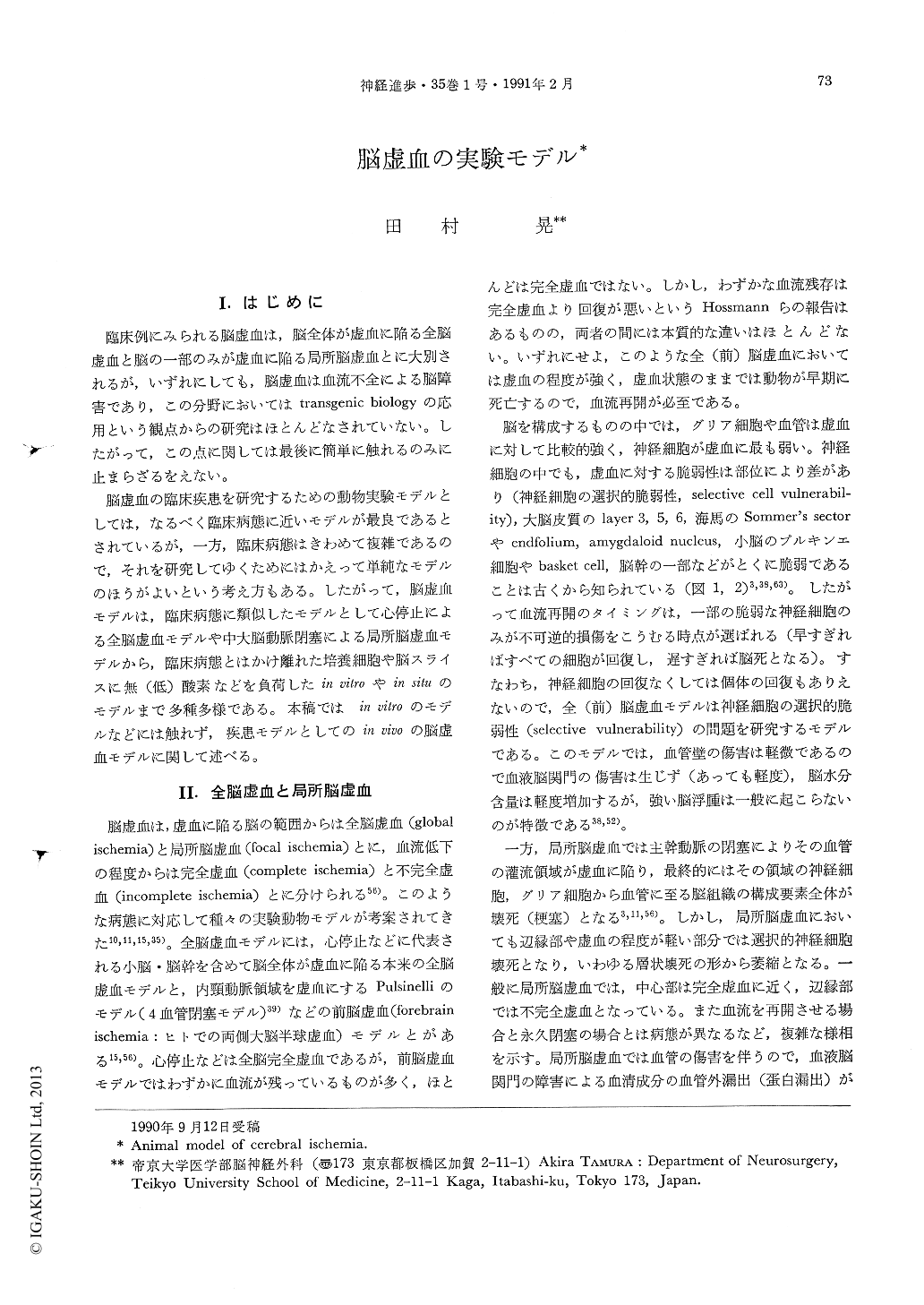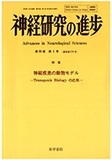Japanese
English
- 有料閲覧
- Abstract 文献概要
- 1ページ目 Look Inside
I.はじめに
臨床例にみられる脳虚血は,脳全体が虚血に陥る全脳虚血と脳の一部のみが虚血に陥る局所脳虚血とに大別されるが,いずれにしても,脳虚血は血流不全による脳障害であり,この分野においてはtransgenic biologyの応用という観点からの研究はほとんどなされていない。したがって,この点に関しては最後に簡単に触れるのみに止まらざるをえない。
脳虚血の臨床疾患を研究するための動物実験モデルとしては,なるべく臨床病態に近いモデルが最良であるとされているが,一方,臨床病態はきわめて複雑であるので,それを研究してゆくためにはかえって単純なモデルのほうがよいという考え方もある。したがって.脳虚血モデルは,臨床病態に類似したモデルとして心停止による全脳虚血モデルや中大脳動脈閉塞による局所脳虚血モデルから,臨床病態とはかけ離れた培養細胞や脳スライスに無(低)酸素などを負荷したin vitraやin situのモデルまで多種多様である。本稿ではin vitroのモデルなどには触れず,疾患モデルとしてのin vivoの脳虚血モデルに関して述べる。
Cerebral ischemia is a complex and multifactorial process. Animal models of cerebral ischemia have been widely used to make clear the pathophysiology of the ischemic brain injury and to test the therapies against cerebral ischemia. Many animal ischemia models have been developed in numerous species and in various forms of cerebral ischemia, namely global and focal, complete and incomplete, and permanent and trasient. In global cerebral ischemia, selective cell vulnerability to ischemia is a most important factor. Neurons appear to be more susceptable to hypoxia and ischemia as compared with other components, such as glial cells and vessels. In global cerebral ischemia models, I reviewed ① the Hossmann's global cerebro-circulatory arrest model by occluding the inominate, the left subclavian and both mammary arteries, ② the bilateral carotid occlusion with systemic hypotension model in rats by Smith et al., ③ the 4 vessel occlusion model in rats by Pulsinelli and Brierly, and ④ the bilateral carotid occlusion model in Mongolian gerbils. On the other hand, the main issue in the focal cerebral ischemia is a concept of ischemic thresholds of cerebral blood flow. The so-calld “zone of ischemic penumbra” is of particular interest as a zone of nonfunctioning but still viable tissue that may recover its function if blood flow can be restored. As the forcal cerebral ischemia model, the middle cerebral artery occlusion model in cats and rats and the embolic stroke model were discussed in this paper.

Copyright © 1991, Igaku-Shoin Ltd. All rights reserved.


